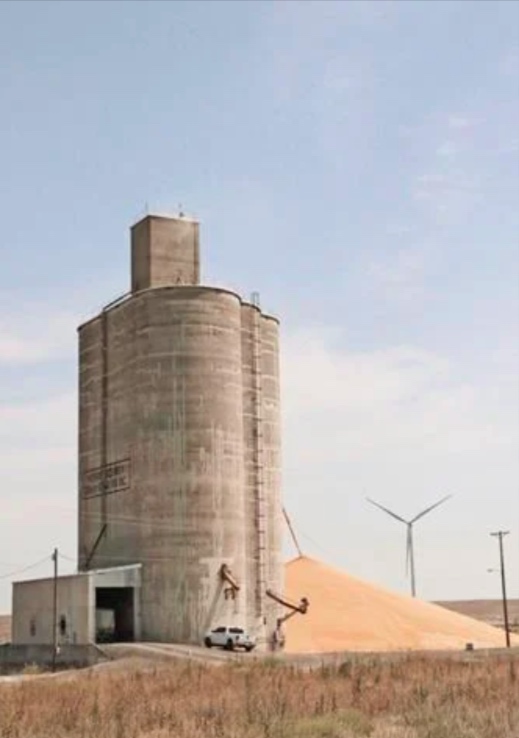forum
library
tutorial
contact

Winter Wheat Production Up
by a Third in Oregon, Washington
by Matthew WeaverCapital Press, August 15, 2024
|
the film forum library tutorial contact |

|
Winter Wheat Production Up
by Matthew Weaver |
The pace of soft white wheat and overall U.S. wheat sales is ahead of last year.
 Farmers in Oregon and Washington are raising a third more winter wheat this year over last year, while Idaho wheat farmers are holding steady.
Farmers in Oregon and Washington are raising a third more winter wheat this year over last year, while Idaho wheat farmers are holding steady.
"The timeliness of rains this year is the largest contributing factor to the increased yields in Oregon," said Oregon Wheat CEO Amanda Hoey.
"Although rainfall and snowfall were both below average in most places in Washington, the moisture that was received was well timed and the cooler weather in June allowed the plants to develop and maintain favorable conditions," said Casey Chumrau, executive director of the Washington Grain Commission.
According to the USDA's National Agricultural Statistics Service's recent crop production report, Oregon winter wheat production is forecast at 55.8 million bushels, up 38% from last year. Harvested area, at 725,000 acres, is unchanged from 2023.
Yield is expected to be 77 bushels per acre, up 21 bushels from the previous year. Washington winter wheat production is forecast at 125 million bushels, up 33% from last year.
Harvested area, at 1.79 million acres, is up 40,000 acres from 2023.
Yield is expected to be 70 bushels per acre, up 16 bushels from the previous year.
Winter wheat in Idaho is forecast at 59.5 million bushels, up 6% from last year.
Harvested area, at 700,000 acres, is up up 70,000 acres from 2023.
Yield is expected to be 85.0 bushels per acre, down 4.0 bushels from 2023.
"While the wheat production in the rest of the country has declined over the past several years, Idaho’s planted and harvested acres have remained quite steady," said Britany Hurst Marchant, executive director of the Idaho Wheat Commission.
The price does have some effect on the class of wheat that farmers plant, but farmers have crop rotation systems that they adhere to because those systems improve soil health and those cropping systems largely involve wheat, she said.
"Whether wheat is being planted because it performs well in dryland conditions or because it’s a rotation crop, Idaho’s wheat farmers consistently meet the demand regardless of price volatility," Hurst Marchant said.
Hoey expects Oregon's overall yield to be above average, but the amount above average estimated by USDA is "slightly unexpected."
"Until getting into the field and actually through harvest, it can be hard to tell the full outcome," Hoey said. "We still have a little time left in harvest, but a much clearer picture at this point in the year."
Oregon had a large carryover from last year's crop, she added.
With 2024 having good quality crop with likely lower than average protein on soft white, the two years will balance for customer needs," Hoey said.
Worldwide factors will have a much larger consequence for price, she said.
"The wheat numbers 'reshuffled the deck' a bit in where those numbers lay for US production, but Oregon reflects the positive growing season and the luck for timely rains in the dryland areas," she said.
Spring wheat
Spring wheat in Idaho is forecast at 38.3 million bushels, up 18% from last year. Harvested area, at 440,000 acres, is up 45,000 acres from 2023.
Yield is expected to be 87 bushels per acre, up 5 bushels from 2023.
Washington production is forecast at 23.5 million bushels, up 26% percent from last year. Harvested area, at 490,000 acres, is unchanged from 2023.
Yield is expected to be 48 bushels per acre, up 10 bushels from the previous year.
Spring wheat is 5% or less of total Oregon wheat production, Hoey said.
Barley
Idaho barley production is forecast at 56.4 million bushels, down 7% from last year. Harvested area, at 490,000 acres, is down 50,000 acres from 2023.
Yield is expected to be 115 bushels per acre, up 3 bushels from 2023.
Washington barley production is forecast at 5.10 million bushels, up 15% from last year. Harvested area, at 68,000 acres, is down 16,000 acres from 2023.
Yield is expected to be 75 bushels per acre, up 22 bushels from the previous year.
Nationwide
All wheat production for grain is forecast at 1.98 billion bushels, up 9% from 2023.
Based on Aug. 1 conditions, yields are expected to average 52.2 bushels per harvested acre, up 3.6 bushels from 2023.
Area harvested for grain is forecast at 37.9 million acres, up 2% from 2023.
Hard red winter production is projected at 776 million bushels. Soft red winter is projected at 342 million bushels.
Of white winter production, 19.3 million bushels are hard white and 224 million bushels are soft white, grown primarily in the Pacific Northwest.
Spring wheat production for grain is forecast at 544 million bushels, up 8% from last year.
Based on August 1 conditions, yields are expected to average 52.6 bushels per harvested acre, up 6.6 bushels from 2023.
If realized, the United States yield would be a record high, according to USDA NASS.
Related Pages:
NW Wheat Harvest: Yields and Exports Up, Prices Down by Matthew Weaver, Capital Press, 8/2/24
learn more on topics covered in the film
see the video
read the script
learn the songs
discussion forum
